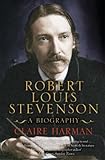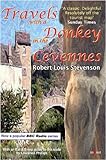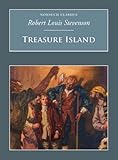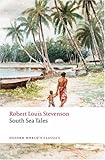Robert Louis Stevenson was born on November 13, 1850, in Edinburgh, Scotland. His mother, Margaret Balfour Stevenson, was a minister’s daughter, and his father, Thomas Stevenson, was a civil engineer, and with his grandfather, a famed lighthouse builder.
Stevenson was a sickly child, born with a lung disorder, and spent much time in his bedroom drawing or painting, playing with toys, and making up wonderful stories of faraway lands and exciting adventures. He always yearned to go that “somewhere of the imagination where all the troubles are supposed to end”. His formal education started at the age of seven, but his studies were undertaken with great irregularity. What he loved most about school were the magazines he initiated: miscellaneous collections of ‘fact, fiction and fun’, titled Sunbeam Magazine and The Schoolboy Magazine. At his father’s insistence, he entered Edinburgh University to study Engineering. He then went on to study Law, although he was much more interested in Literature and writing.
and exciting adventures. He always yearned to go that “somewhere of the imagination where all the troubles are supposed to end”. His formal education started at the age of seven, but his studies were undertaken with great irregularity. What he loved most about school were the magazines he initiated: miscellaneous collections of ‘fact, fiction and fun’, titled Sunbeam Magazine and The Schoolboy Magazine. At his father’s insistence, he entered Edinburgh University to study Engineering. He then went on to study Law, although he was much more interested in Literature and writing.
In 1878, his first book, An Inland Voyage, was published, closely followed by  Travels with a Donkey in the Cevennes (1879). This was a fascinating account of a romantic hike through the forests and hills of central France, with unforgettable scenes of Stevenson sleeping under the stars, with the strong-willed Modestine tethered by his side. His love of the people he encountered shines throughout. With such a strong visual sense, it is hardly surprising that Stevenson’s stories remain ever popular with successive generations of readers.
Travels with a Donkey in the Cevennes (1879). This was a fascinating account of a romantic hike through the forests and hills of central France, with unforgettable scenes of Stevenson sleeping under the stars, with the strong-willed Modestine tethered by his side. His love of the people he encountered shines throughout. With such a strong visual sense, it is hardly surprising that Stevenson’s stories remain ever popular with successive generations of readers.
From 1884 to 1887, he mostly lived in Bournemouth. There he wrote Kidnapped, and its successor, Catriona. The adventure story, accurately drawing on events from his native land’s Jacobite past, portrays the clash of loyalties well, the Highlander Alan Breck the hero. It has been noticed Stevenson had some difficulty convincingly creating the female characters in his novels (compare with Lewis Grassic Gibbon in Sunset Song), and Catriona suffers as a sequel as a result. However, along with the later The Master of Ballantrae and the unfinished Weir of Hermiston, these books form the meat of Stevenson’s Scottish writings, evoking the Scottish scenery and character, the historical tensions, the influence of the Calvinist psyche, and his reflections on the people who have lived their lives and shaped the present.
Stevenson’s writing career flourished and over the course of his life he created some of the world’s best loved classics, including Treasure Island (1883) with the unforgettable Long John Silver, The Strange Case of Dr Jekyll and Mr Hyde (1886), and A Child’s Garden of Verses (1885), which have never gone out of print since first publication. Try and obtain a copy of Treasure Island with N. C. Wyeth’s marvelous illustrations (1911). Stevenson also wrote short stories, poems, plays, travelogues and essays.
Stevenson’s love for travel is apparent in his works of fiction, many of which are set in exotic lands. He was always thrilled at the prospect of setting off into the unknown, far away from everyday life. Upon sailing from San Francisco on the Casco for Honolulu and the South Seas in 1888, he expressed his delight in leaving, as he put it, “the legacy of the Roman Empire..whose laws and letters are on every hand of us, constraining and preventing.”
He soon discovered that Samoa had been divided between colonial Britain, Germany, and the United States. The injustices colonialism created form a thread in the short stories such as ‘Ebb Tide’ and ‘The Beach of Falesa’. The local people loved him.
He had an infectious, joyful, optimistic philosophy; he was always on the look-out for something different, unusual or fortuitous. He was generous, recognised the good in life as a gift from heaven, acknowledging it with gratitude, putting it to best use, sharing it with others. That is the spirit that pervades his writings.
His journeys to the South Seas profoundly influenced his creative imagination: he was inspired by the beauty and peaceful simplicity of life in the islands. He took up residence in Samoa in 1890 and lived there until his death in 1894. His grave is on Mount Vaea, and engraved on the stone there is a Samoan phrase, in English meaning ‘Teller of Tales’.
